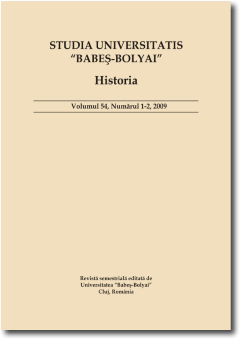THE CAREER OF TWO ARCHDEACONS OF THE LATE MIDDLE AGES
THE CAREER OF TWO ARCHDEACONS OF THE LATE MIDDLE AGES
Author(s): Mária Lupescu MakóSubject(s): History
Published by: Studia Universitatis Babes-Bolyai
Keywords: archdeacon; benefice; royal secretary; Transylvania; Middle Ages.
Summary/Abstract: In the Middle Ages archdeacons represented a group of the ecclesiastic élite, who had a bright perspective for the future and who played an important role in church administration. They had a large area of competence, high authority and serious power to exercise in everyday life all these enabled them to hold leadership and control in their hands and to give orders. Due to their competence in administrative, financial and canon law matters related to the priests and church members within their own church district, they played a key-role in the life of the Church in the Middle Ages. This being the case it is understandable why the Church, on the one hand, aimed at raising the level of their erudition and providing their education and why the court, on the other hand, made it its practice to honour their activity at court by donating them benefices. By patronizing the archdeacons both the church and the court ensured very prudently their own interests as well. In the present study, I will try to illustrate the career perspectives of the archdeacons holding benefices by presenting the career of two representatives, i.e. two archdeacons of two neighbouring archdeaconries: Szatmár (Sătmar) and Ugocsa (Ugocea) in the late Middle Ages. The walk of life of Ferenc Acél, archdeacon of Sătmar and Miklós Gerendi, the archdeacon of Ugocea have many similarities as both belonged to the middle class of the clergy, but at the same time also many differences springing from their origin, their family relations, their studies and their patronage can be found.
Journal: Studia Universitatis Babes-Bolyai - Historia
- Issue Year: 56/2011
- Issue No: 1
- Page Range: 45-66
- Page Count: 22
- Language: English

